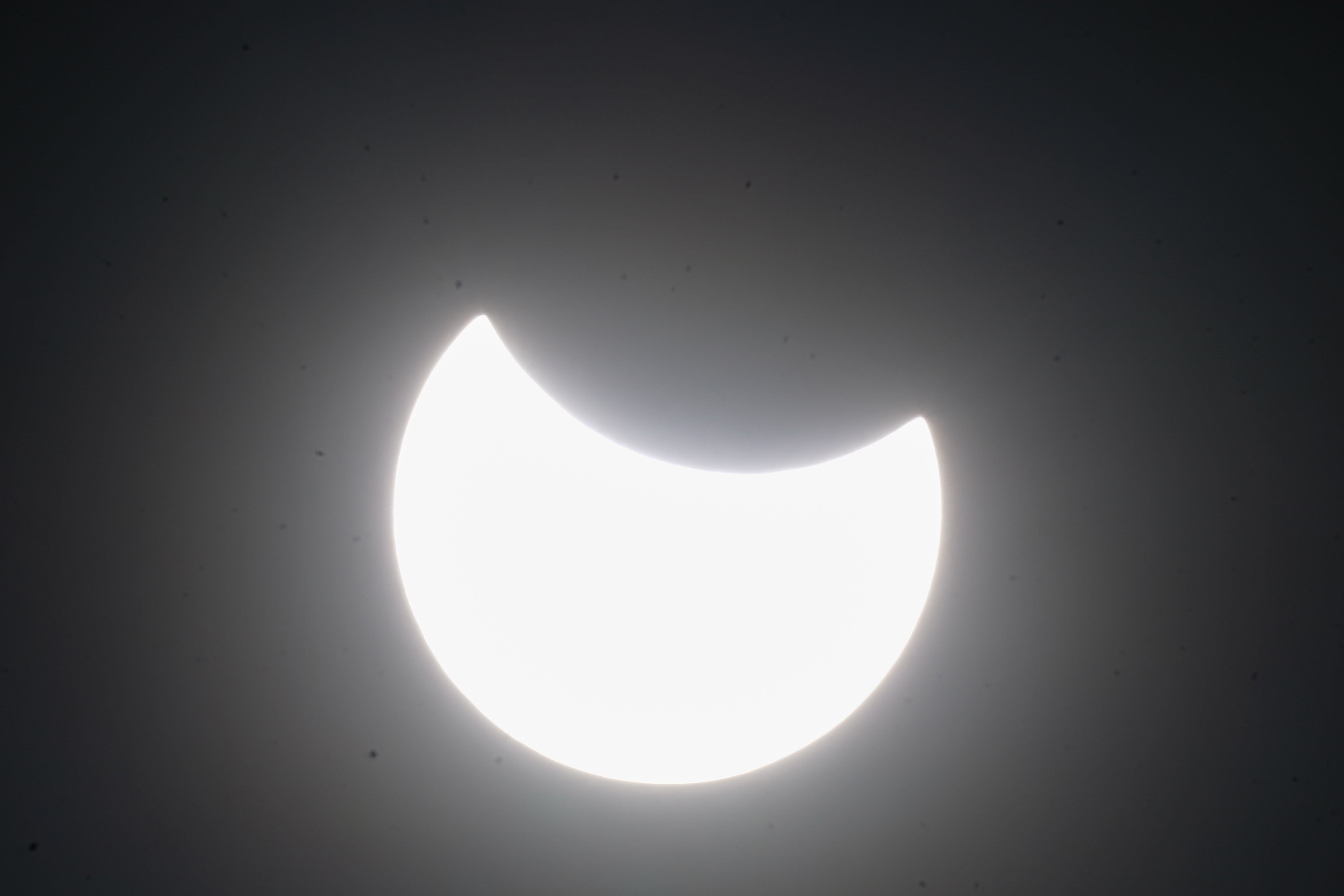People across the UK looked to the skies on Saturday to witness a partial solar eclipse.
The celestial event, which happens when the Moon partially obscures the Sun as it passes between the Sun and Earth, was visible in parts of the country between 10am and noon.
The eclipse reached its peak in London around 11am.
The Met Office said earlier on Saturday that southern and eastern areas of the UK would have the best viewing conditions, with cloudier skies in the north and west.
The next partial solar eclipse visible in the UK will be in August 2026, which is expected to reach 90% obscurity.

Speaking from the town of Lewes, Sussex, at around 11am, Robert Massey, deputy executive director of the Royal Astronomical Society, said: “There’s a really nice crowd of people, everybody’s really excited, there’s people wearing eclipse glasses, looking through the telescopes we’ve got set up.
“We’re loving it and it’s a lot of fun. It’s a great public atmosphere, it’s a really nice event. There’s a huge amount of enthusiasm about it.
“As expected, the Moon started moving in front of the Sun about an hour ago; it’s got a bit under an hour to go and it’s blocking out some of the Sun.”
He added: “It’s not like the landscape or the light looks different if you’re not looking at the eclipse, but if you’re looking through a telescope then you see this really obvious bite.
“One of my colleagues here has a colander and through that, you can see little pinholes of the sun with the bite out of it as well.
“I think you could guess it’s running into the tens of thousands watching with events like this, there’s local astronomy groups across the UK who are doing it.”

Astronomer Imo Bell, at the Royal Observatory Greenwich, said at 11.15am: “There’s been nothing unexpected, but that’s the cool thing, we’ve known this has been coming for a very long time.
“We have the technology and the understanding of space now to predict these things almost to the second.
“I, along with thousands of people, are watching. I’m in Oxford right now, we reached a bit more than 30% obscurity of the Sun.
“I’ve heard a lot of people in the UK where they have higher obscurity have bad cloud coverage, though. If you’ve got good weather, you’re pretty lucky.”


